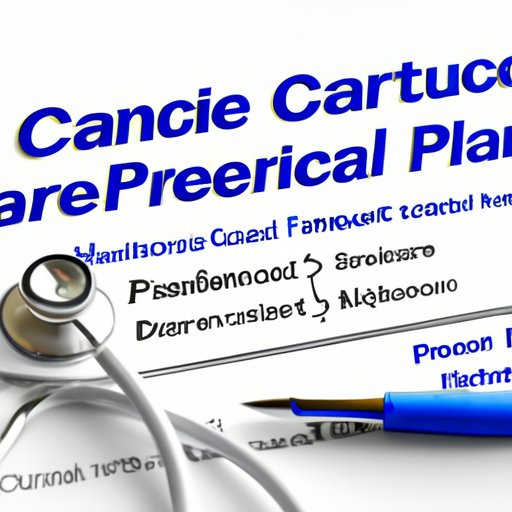Introduction
Medicare is a health insurance program for people aged 65 and over, as well as certain people with disabilities. It’s administered by the federal government and funded through payroll taxes. Part C of Medicare, also known as Medicare Advantage, is an alternative way to get your Medicare coverage. It offers additional benefits beyond what Original Medicare (Parts A and B) provides, such as vision and dental coverage, as well as prescription drug coverage. In this article, we’ll explore what Part C of Medicare is, its benefits, different plans offered, how to enroll, and common questions.
Benefits of Part C of Medicare
The primary benefit of Part C of Medicare is that it offers additional coverage beyond what Original Medicare provides. This includes vision and dental coverage, as well as prescription drug coverage. Additionally, Part C of Medicare plans often come with additional benefits, such as gym memberships or transportation services, which are not available through Original Medicare.
When comparing the costs of Part C of Medicare versus Original Medicare, there are a few things to consider. While Part C of Medicare plans typically have lower premiums than Original Medicare, they also usually have higher out-of-pocket costs. Additionally, Part C of Medicare plans may have annual or lifetime maximums, meaning that you could be responsible for paying any healthcare costs beyond those limits.

Reviewing Different Plans Offered Through Part C of Medicare
Part C of Medicare plans are offered by private insurance companies and vary in terms of coverage and cost. There are four main types of plans: Health Maintenance Organizations (HMOs), Preferred Provider Organizations (PPOs), Private Fee-for-Service (PFFS) plans, and Medical Savings Accounts (MSAs). Each type of plan has different coverage and cost structures, so it’s important to compare them before making a decision.
HMO plans typically provide the most comprehensive coverage but require you to use in-network providers. PPO plans provide more flexibility in choosing providers but may require higher out-of-pocket costs. PFFS plans allow you to see any provider that accepts the plan’s terms and conditions, while MSAs are a combination of a high-deductible health plan and a savings account.

Analyzing Pros and Cons of Part C of Medicare
Part C of Medicare offers a range of benefits, but there are also some drawbacks to consider. On the plus side, Part C of Medicare plans offer additional coverage beyond what Original Medicare provides, including vision and dental care, as well as prescription drug coverage. Additionally, Part C of Medicare plans often come with additional benefits, such as gym memberships or transportation services.
On the other hand, Part C of Medicare plans may have higher out-of-pocket costs than Original Medicare and may have annual or lifetime maximums. Additionally, Part C of Medicare plans require you to use in-network providers for some services, meaning that you may not be able to see the doctor of your choice.

Exploring How to Enroll in Part C of Medicare
In order to be eligible for Part C of Medicare, you must first be enrolled in Parts A and B of Original Medicare. Additionally, you must live in the service area of the Part C of Medicare plan you’re considering.
Once you’ve determined that you are eligible for Part C of Medicare, the next step is to choose a plan. You can compare different plans online or talk to a representative from a private insurance company. Once you’ve selected a plan, you can fill out an application and submit it to your chosen insurer.
Examining Common Questions About Part C of Medicare
There are a number of misconceptions and frequently asked questions about Part C of Medicare. One common misconception is that Part C of Medicare will cover all medical expenses. However, this is not true—Part C of Medicare plans still have deductibles, copays, and coinsurance, just like Original Medicare.
Another frequently asked question is whether Part C of Medicare covers long-term care. The answer is no—long-term care is not covered under Part C of Medicare. If you need long-term care, you should look into other options, such as Medicaid or long-term care insurance.
Conclusion
Part C of Medicare is an alternative way to get your Medicare coverage. It offers additional benefits beyond what Original Medicare provides, such as vision and dental coverage, as well as prescription drug coverage. When comparing the costs of Part C of Medicare versus Original Medicare, it’s important to consider the potential out-of-pocket costs and annual or lifetime maximums. There are four main types of Part C of Medicare plans available, each with different coverage and cost structures. Part C of Medicare plans have both advantages and disadvantages, so it’s important to weigh the pros and cons before making a decision. Finally, in order to be eligible for Part C of Medicare, you must first be enrolled in Parts A and B of Original Medicare and live in the service area.
Part C of Medicare can be a great option for those looking for additional coverage beyond what Original Medicare provides. But it’s important to do your research and compare different plans before making a decision.
(Note: Is this article not meeting your expectations? Do you have knowledge or insights to share? Unlock new opportunities and expand your reach by joining our authors team. Click Registration to join us and share your expertise with our readers.)
